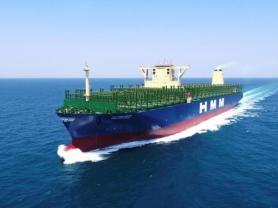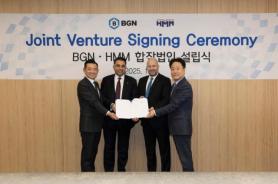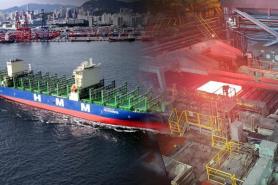![Koo Kyo-hoon, President of the Korea International Logistics Association [Photo=AJU Business Daily DB]](https://image.ajunews.com/content/image/2025/10/29/20251029101222923325.jpg)
SEOUL, October 30 (AJP) - This year’s Nobel Prize in Economics celebrated the power of innovation and sustainable growth through the lens of “creative destruction.” Co-recipient Prof. Peter Howitt underscored the need for a competitive environment that enables market leaders to keep innovating — a concept rooted in Joseph Schumpeter’s classic theory that progress is driven as much by destruction as by creation.
That message resonates deeply with South Korea’s shipping industry, which is struggling to adapt to what many call the “Big Blur” era — when traditional industry boundaries are dissolving.
Global giants like Amazon and Tesla have already transcended their original domains, evolving into platforms designed to solve complex customer problems. Yet South Korea’s shipping sector remains bound by convention, held back by resistance to mergers and acquisitions and a deep-seated wariness toward outside capital.
The global landscape tells a starkly different story. Over the past two decades, the world’s leading shipping companies have expanded aggressively through M&A, consolidating their power and reshaping global logistics. Today, the top 10 players control roughly 84 percent of the world’s container capacity. Scale and integration have become prerequisites for survival.
Against this backdrop, the planned privatization of HMM — the nation’s flagship carrier — is more than a question of ownership. It is a test of whether South Korea can move beyond its traditional view that only “shipping experts” can manage a shipping company. Such thinking risks isolating the industry at a time when cross-sector collaboration is the engine of global competitiveness.
Elsewhere, the lines between manufacturing, logistics, and finance have long blurred. Germany’s Deutsche Post DHL and Denmark’s Maersk have both built integrated logistics ecosystems, creating resilient structures that can weather economic turbulence.
South Korea’s shipping industry, by contrast, has struggled to escape the shadow of its past. The collapses of Hanjin Shipping and Hyundai Merchant Marine were not just business failures — they were symptoms of an industry that resisted change until it was too late.
If HMM is to avoid a similar fate, it must embrace creative destruction and the discipline of private ownership. Clinging to old models, protecting vested interests, and erecting barriers to competition may feel like safety — but only in the short term. In the long run, such strategies erode competitiveness and innovation.
The industry’s future depends on openness, flexibility, and diversification. As the saying goes, “Those who build walls perish; those who build roads prosper.” South Korea’s shipping industry must stop building walls around itself and instead build the roads that connect technology, capital, and service into a unified logistics platform.
What the industry needs now is not fear of disruption but the courage to pursue it. Breaking down boundaries and reshaping industrial order is not a threat — it is the path to renewal. The question is whether South Korea’s shipping leaders will have the will to chart that course before the tide turns against them once again.
* This article, published by Aju Business Daily, was translated by AI and edited by AJP.
Copyright ⓒ Aju Press All rights reserved.



